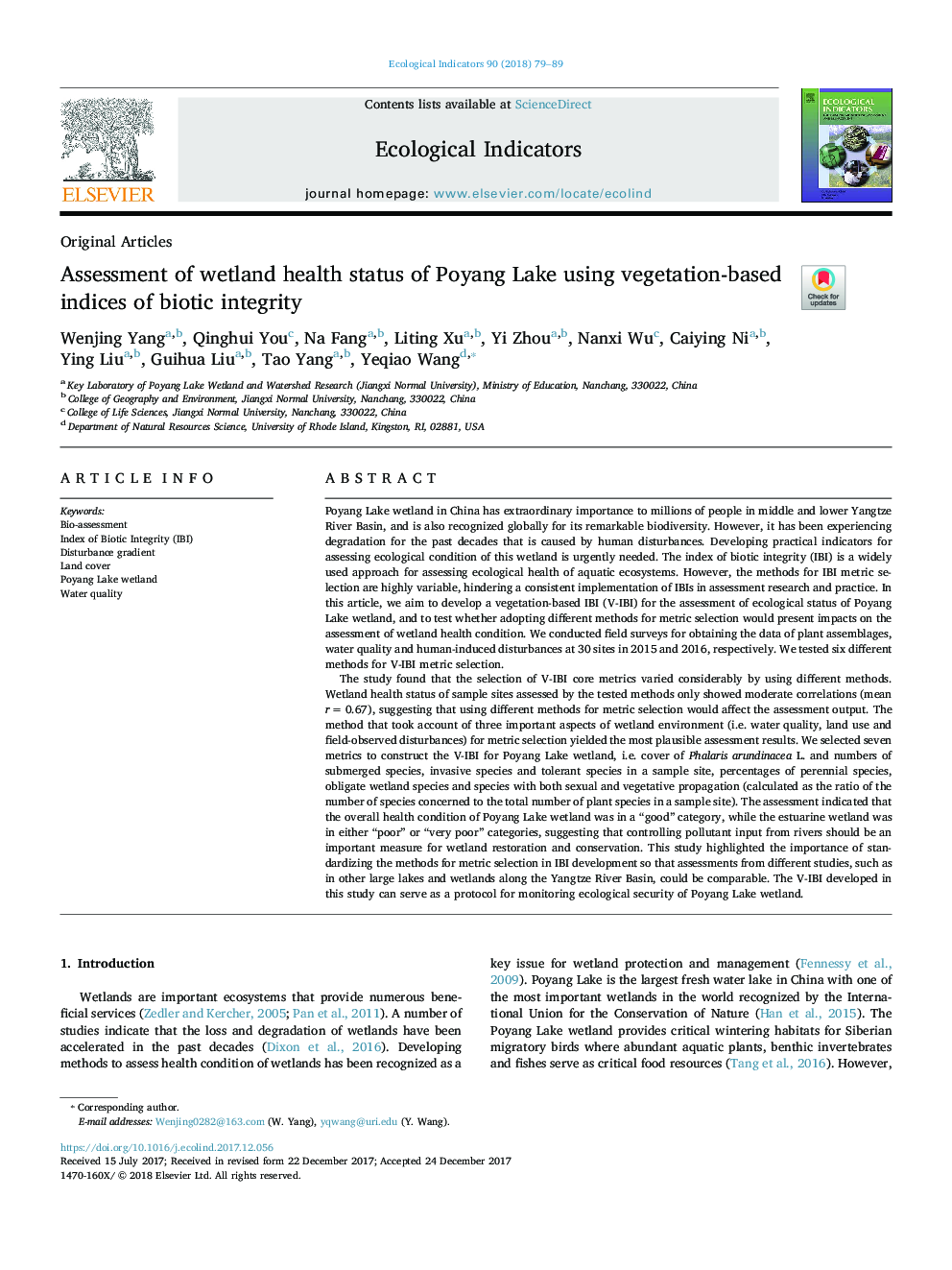| Article ID | Journal | Published Year | Pages | File Type |
|---|---|---|---|---|
| 8845355 | Ecological Indicators | 2018 | 11 Pages |
Abstract
The study found that the selection of V-IBI core metrics varied considerably by using different methods. Wetland health status of sample sites assessed by the tested methods only showed moderate correlations (mean râ¯=â¯0.67), suggesting that using different methods for metric selection would affect the assessment output. The method that took account of three important aspects of wetland environment (i.e. water quality, land use and field-observed disturbances) for metric selection yielded the most plausible assessment results. We selected seven metrics to construct the V-IBI for Poyang Lake wetland, i.e. cover of Phalaris arundinacea L. and numbers of submerged species, invasive species and tolerant species in a sample site, percentages of perennial species, obligate wetland species and species with both sexual and vegetative propagation (calculated as the ratio of the number of species concerned to the total number of plant species in a sample site). The assessment indicated that the overall health condition of Poyang Lake wetland was in a “good” category, while the estuarine wetland was in either “poor” or “very poor” categories, suggesting that controlling pollutant input from rivers should be an important measure for wetland restoration and conservation. This study highlighted the importance of standardizing the methods for metric selection in IBI development so that assessments from different studies, such as in other large lakes and wetlands along the Yangtze River Basin, could be comparable. The V-IBI developed in this study can serve as a protocol for monitoring ecological security of Poyang Lake wetland.
Related Topics
Life Sciences
Agricultural and Biological Sciences
Ecology, Evolution, Behavior and Systematics
Authors
Wenjing Yang, Qinghui You, Na Fang, Liting Xu, Yi Zhou, Nanxi Wu, Caiying Ni, Ying Liu, Guihua Liu, Tao Yang, Yeqiao Wang,
